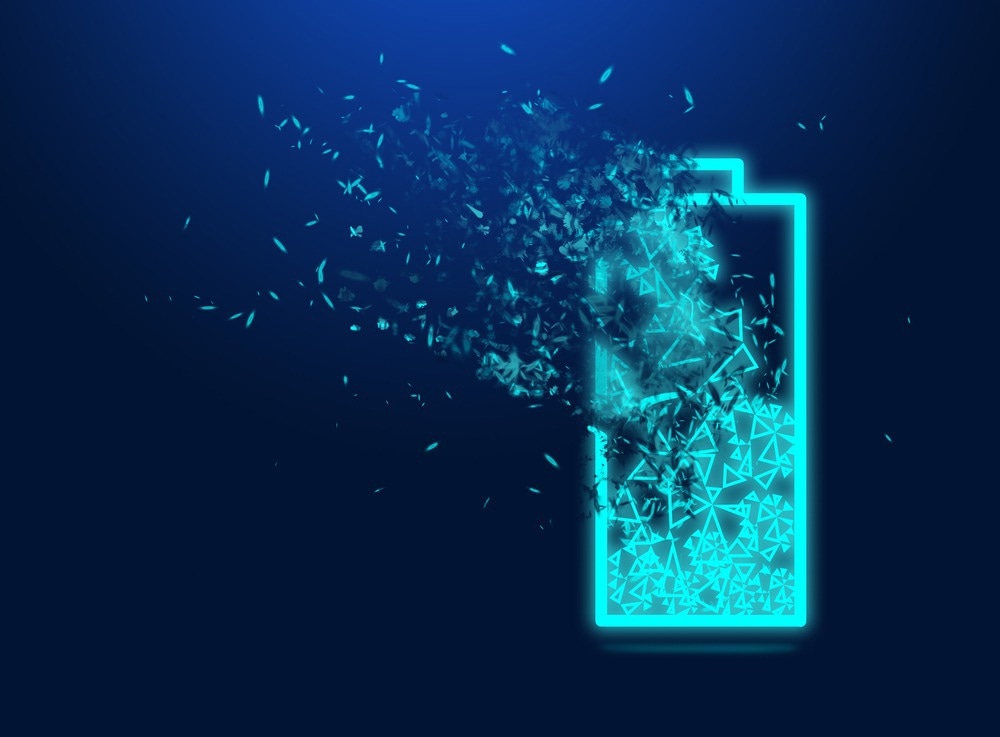In a new study published in Nature Energy, a research group led by Prof. Xianfeng Li from the Dalian Institute of Chemical Physics (DICP) of the Chinese Academy of Sciences (CAS) collaborated with Prof. Qiang Fu’s group from DICP to construct a multi-electron transfer cathode based on bromine and iodine, attaining a specific capacity of more than 840 Ah/L and an energy density of up to 1200 Wh/L based on catholyte in full battery testing.

Image Credit: New Africa/Shutterstock.com
Traditional non-aqueous lithium-ion batteries offer a high energy density, but their safety is impaired by the flammable organic electrolytes they use.
Using water as the electrolyte solvent significantly enhances the safety of aqueous batteries. However, aqueous batteries usually have a lower energy density because of the electrolyte's low voltage and restricted solubility. This indicates that little electricity is stored in an aqueous battery per unit volume.
Researchers employed a mixed halogen solution of iodide ions (I-) and bromide ions (Br-) as the electrolyte to increase the energy density of aqueous batteries. Using a multi-electron transfer process, they moved I-to iodine element (I2) and then to iodate (IO3-).
I- was oxidized to IO3- on the positive side during the charging process, and the H+ that was produced was carried to the negative side in the form of a supporting electrolyte. H+ was conducted from the positive side, and IO3- was reduced to I- throughout the discharge procedure.
The developed multi-electron transfer cathode has a specific 840 Ah/L capacity. By combining the cathode with metallic Cd to build a whole battery, researchers could attain an energy density of up to 1200 Wh/L using the newly developed catholyte.
Furthermore, researchers proved that Br- added to the electrolyte might produce polar iodine bromide (IBr) during the charging process, facilitating the reaction with H2O to yield IO3-. During the discharge, IO3- oxidized Br- to Br2 and participated in the electrochemical process, resulting in a reversible and fast discharge of IO3-.
As a result, the bromide intermediate generated during the charge and discharge process enhanced the reaction process, significantly enhancing the kinetics and reversibility of the electrochemical reaction.
Prof. Fu’s group demonstrated the multi-electron transfer process using in-situ optical microscopy and Raman spectroscopy, among other techniques.
This study provides a new idea for the design of high-energy-density aqueous batteries, and may expand the aqueous batteries application in power batteries field.
Xianfeng Li, Professor, Dalian Institute of Chemical Physics, Chinese Academy of Sciences
Journal Reference:
Xie, C., et. al. (2024) Reversible multielectron transfer I−/IO3− cathode enabled by a hetero-halogen electrolyte for high-energy-density aqueous batteries. Nature Energy. doi:10.1038/s41560-024-01515-9